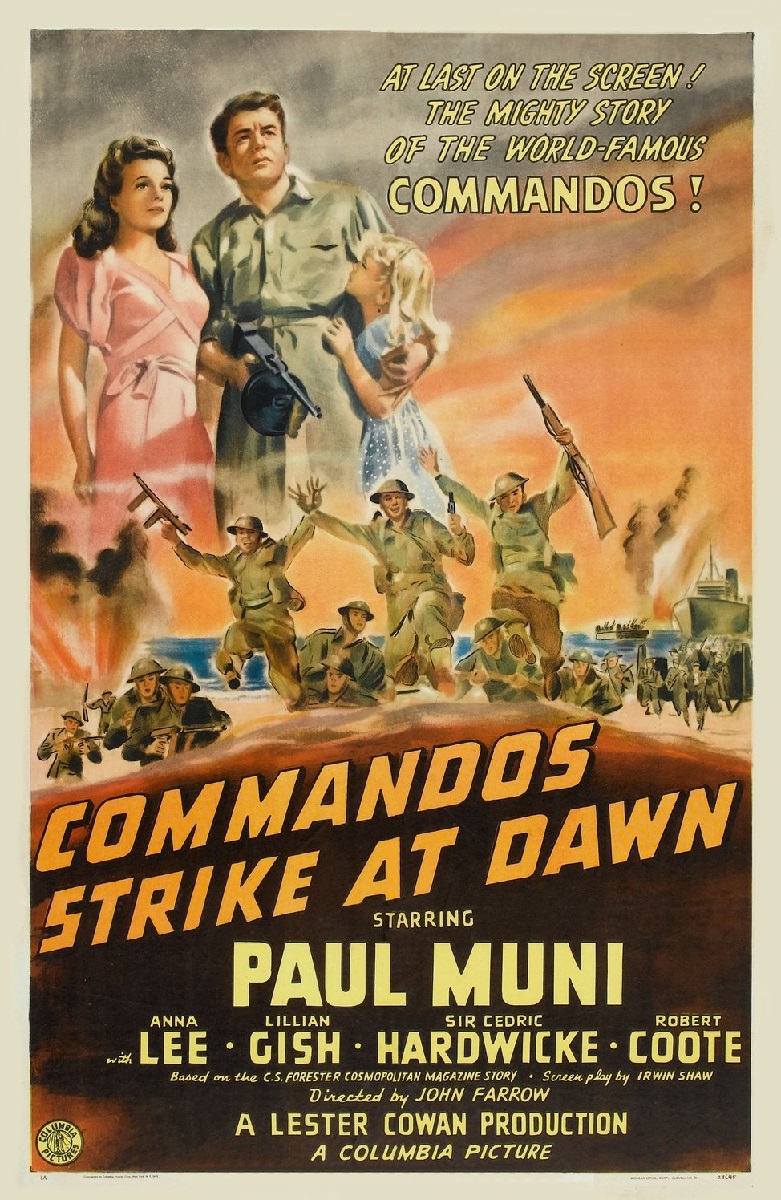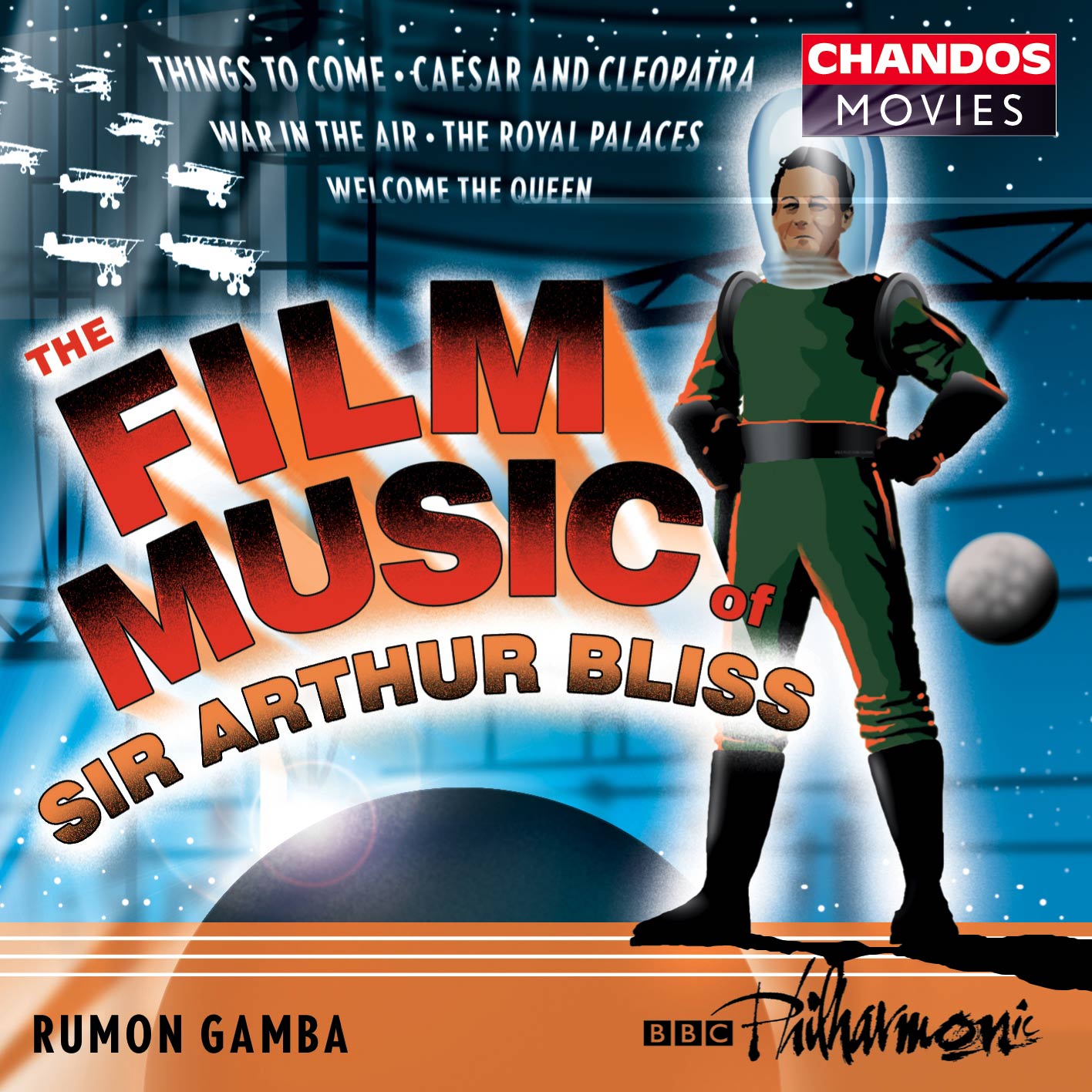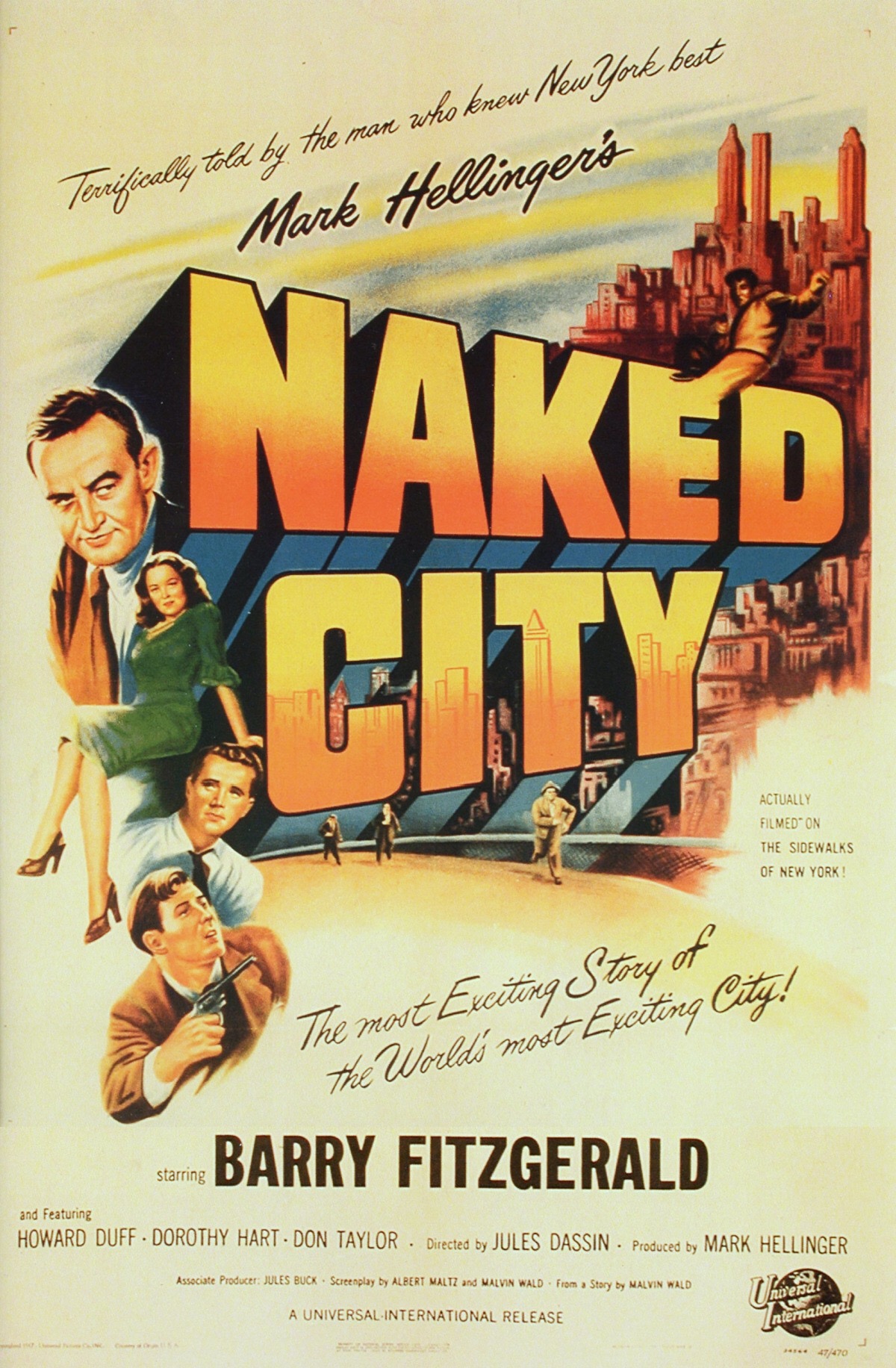
In the second part of this series, we continue to explore the history behind some of the film scores that were replaced during Hollywood’s Golden Age. This particular selection features the work created by some of the brightest musical minds of the era that would nonetheless get rejected due to creative differences and clashes of egos.
 ‘COMMANDOS STRIKE AT DAWN’ FILM POSTER
‘COMMANDOS STRIKE AT DAWN’ FILM POSTER
Commandos Strike at Dawn (1942)
Louis Gruenberg
Igor Stravinsky
Commandos Strike at Dawn is a 1942 Second World War propaganda film directed by John Farrow and adapted by Irwin Shaw from a short story entitled The Commandos by C.S. Forester that appeared in Cosmopolitan magazine in June 1942. The film tells the story of a Norwegian fisherman who is outraged by the atrocities committed by the Nazis against his peaceful, bucolic village and escapes to Britain to form a resistance force.
Toward the end of 1941, Morris Stoloff, musical director at Columbia Pictures Corporation, met with Russian composer Igor Stravinsky to discuss the possibility of his composing the score for Commandos Strike at Dawn. Stravinsky had been living in the United States since 1939, following the deaths of his wife and daughter from tuberculosis. Just before emigrating, Stravinsky himself had spent five months in hospital, during which time his mother died.
 IGOR STRAVINSKY
IGOR STRAVINSKY
Alexandre Tansman was appointed as Stravinsky’s assistant and Hollywood advisor on the score due to the latter’s lack of experience with the Hollywood scoring system, and they both sought out Miklós Rózsa’s advice on the technicalities of scoring a film.
In the end, the negotiations didn’t pan out. Similar to Arnold Schoenberg’s attempt to score The Good Earth, Stravinsky began working on the score long before signing a contract. His approach was to create a pastoral atmosphere with his score by basing the music on Norwegian folk songs. This was an unusual perspective, considering that war films at the time had a very specific sound and featured heroic marches and fanfares.
Stravinsky ended up salvaging the material he had written and turned it into a four-movement concert suite entitled Four Norwegian Moods, premiered by the Boston Symphony Orchestra on 13 January, 1944. Stravinsky had based his compositions on pieces found in The Norway Music Album, three of which were arrangements by Edvard Grieg. Stravinsky vehemently denied to have drawn inspiration from Edvard Grieg’s music, stating, ‘All the themes in my Norwegian Moods were taken from a collection of Norwegian folk music my wife found in a secondhand bookstore in Los Angeles – and not from Grieg, as some writers on my music have stated!’
 ‘FOUR NORWEGIAN MOODS’ ALBUM COVER
‘FOUR NORWEGIAN MOODS’ ALBUM COVER
The replacement composer for the project was another composer of Russian descent, Louis Gruenberg, who not only delivered the score quickly but was exactly what Columbia was looking for. His work earned him an Oscar nomination in the Best Original Score category in 1944.
As for Stravinsky, during the 28 years he lived in the United States, he tried his hand at scoring two more times, but to no avail, on both occasions due to clashes with producer Darryl F. Zanuck. In 1943, he was informally approached to compose the music for Song of Bernadette (1943). He managed to compose music for the ‘Apparition of the Virgin’ scene, however, the project ended up going to Alfred Newman, who won an Oscar. Stravinsky recycled his music which made its way into the second movement of his Symphony in Three Movements. Similarly, in February 1943, upon the personal request of Orson Welles, Stravinsky began composing music for 20th Century Fox’s Jane Eyre (1943). After Bernard Herrmann replaced him, Stravinsky ended up turning the music he had composed for a hunting scene into ‘Eclogue’ to his Ode for orchestra, which premiered in 1943.
Despite never making it as a film composer in Hollywood, Stravinsky remained in Los Angeles until 1969 and his stay in Southern California triggered fresh approaches to his compositional techniques.
 ‘SINCE YOU WENT AWAY’ FILM POSTER
‘SINCE YOU WENT AWAY’ FILM POSTER
Since You Went Away (1944)
Max Steiner
Alexandre Tansman
Since You Went Away is a 1944 American drama film directed by John Cromwell for Selznick International Pictures. The movie was adapted and produced by the legendary producer David O. Selznick from the 1943 novel Since You Went Away: Letters to a Soldier from His Wife by Margaret Buell Wilder. The film tells the story of a housewife who is left home alone to take care of her two daughters and a pair of lodgers while her husband is away to fight in World War II.
Selznick wanted his Oscar bait to demonstrate his patriotic support for the war effort but did not want to make another traditional war movie. As was typical with his productions, he personally wanted to oversee all aspects of the production, including the music. However, finding the right composer for the picture turned out to be quite the challenge.
 DAVID O. SELZNICK
DAVID O. SELZNICK
Selznick’s initial choice was MGM’s in-house composer Herbert Stothart, with whom he had collaborated a few times before. However, Stothart was already attached to four other films. The producer then reached out to Bernard Herrmann, but Herrmann declined, as the project was of no interest to him.
Selznick then asked for a list of all the available composers in Hollywood and their credits and thus ended up hiring freelance composer Alexandre Tansman to score the picture. A prolific concert composer, Tansman was an émigré from Poland who moved to Paris in his twenties and had only worked on one Hollywood film, Flesh and Fantasy (1943). He was unattached to any of the big studios, a position Selznick found to his liking. Hiring Tansman, an established composer of symphonies, operas, and ballets, would carry ‘a certain little extra distinction’ and would help with publicity. Selznick then hired Charles Previn, a music director at Universal, to oversee Tansman’s work and Louis Forbes as Associate Music Director.
 ALEXANDRE TANSMAN WITH HIS FIRST WIFE ANNA ELEONORA BROCINER
ALEXANDRE TANSMAN WITH HIS FIRST WIFE ANNA ELEONORA BROCINER
Tansman was an unknown to the producer, and Selznick was anxious about entrusting a production of such proportions to a composer relatively new to Hollywood. So he requested that Tansman record only a couple of reels of music – or as he put it, ‘the minimum required from a cost standpoint’ – so that the producer could decide early on, before losing too much time and money, if the music worked.
Tansman was then asked to arrange a few versions of ‘Together’, a 1928 song that was the centrepiece of the film’s music, and was only given the length and the overall mood of the scene – he was not informed as to the application of his music to the scenes. This temporary recording was to be produced using a chamber ensemble, so Tansman had to reorchestrate his score for his reduced resources. Naturally, the music did not sound as good as it would have employing the power of a full orchestra, and needless to say, Selznick was less than impressed.
In other words, Tansman had fallen into a trap by agreeing to compose to script, without final footage. This was Selznick’s typical requirement, as he wanted composition to take place before the picture was edited in order to allow composers more time and avoid time crunches during post-production. Max Steiner and Alfred Newman had refused to work like this, being aware of how much a picture could change between script and locked picture. Tansman, however, did not, so when Selznick viewed the synchronised footage and musical mockup, the composer’s fate was sealed.
 ‘SINCE YOU WENT AWAY’ SOUNDTRACK ALBUM COVER
‘SINCE YOU WENT AWAY’ SOUNDTRACK ALBUM COVER
With little time left and a very long film in need of music, Selznick’s reached out to Warner Bros. music director Leo Forbestein and asked to borrow Max Steiner. Forbestein agreed but warned Selznick that hiring Steiner on such short notice would not be cheap. Desperate, Selznick agreed to pay Warner Bros. an astounding $3,300 a week for Steiner’s services. Steiner took the assignment with a bit of anxiety, as he was well aware of Selznick’s habit to micro-manage the scoring process. Ironically, Selznick had considered replacing Steiner during the postproduction of Gone with the Wind, when the composer stated he was unable to deliver the score before the set deadline.
Selznick was very grateful to the composer, considering the time constraints and the fact that at the time, Steiner was going through a rough time in his personal life, as his father was dying and had been hospitalized, his marriage to Louise Klos was falling apart and Steiner himself was suffering from a back tumour that required surgery. ‘Thank heavens for Maxie.’, the producer is said to have affirmed.
Steiner’s score features an astonishing number of themes, several popular songs of the era and traditional works, as well an infusion of several of Steiner’s themes from earlier Selznick pictures. A recording of ‘Together’ from Tansman’s score was retained.
Since You Went Away would mark David O. Selznick and Max Steiner’s final collaboration and was both a commercial and critical success, earning nine Academy Award nominations, winning one for Best Score. This was the first time Selznick’s company would receive the award for best music.
 ‘CAESAR AND CLEOPATRA’ FILM POSTER
‘CAESAR AND CLEOPATRA’ FILM POSTER
Caesar and Cleopatra (1945)
Georges Auric
Arthur Bliss
Caesar and Cleopatra is a 1945 British Technicolor film directed by Gabriel Pascal and is based on the play by George Bernard Shaw and was the most expensive film ever produced in Britain at the time. Gabriel Pascal was the only director Shaw trusted to film his plays after successfully delivering Pygmalion (1938) and Major Barbara (1941). Shaw praised Pascal by saying, ‘Pascal is doing for films what Diaghilev did for ballet.’
The story focuses around a middle-aged Julius Caesar, who, at the height of the Roman Civil War, takes possession of the Egyptian capital city of Alexandria, where he meets a young Cleopatra and teaches her how to rule Egypt.
Shaw himself recommended Sir Arthur Bliss to score the picture, and so, on 6 June 1944, the British composer signed the contract. However, the deal was with the author rather than the director. Bliss, who in 1953 would become Master of the Queen’s Music, was a well-established composer of classical concert music and had only a few movies to his name, including the most expensive film of its time, H.G. Well’s Things to Come. Bliss’ score for Things to Come would have been a pillar in British film scoring had it not been ruined by the perpetual re-editing of the picture and the poor quality of contemporary dubbing technology.
 ‘THE FILM MUSIC OF SIR ARTHUR BLISS’ ALBUM COVER
‘THE FILM MUSIC OF SIR ARTHUR BLISS’ ALBUM COVER
Shaw, who was a former music critic, was in charge of all the communication regarding the music of Caesar and Cleopatra and provided Bliss with some helpful suggestions, including to write music in his own style and not to compose a clichéd imitation of Egyptian music. ‘In Heaven’s name, no Egyptian music!’, the author pleaded. Shaw also sent Bliss a letter offering him serious advice before the contract was signed:
“Be careful not to let yourself be placed in the position of an employee of Pascal or of the film company, as anything you compose for them in that capacity will belong to them and not to you. If I were a composer writing for a film I should make a skeleton piano score of an orchestral suite consisting of overture, nocturne, barcarole, intermezzo and finale. I should copyright this in my own name in England and America. Then, being in an impregnable position as sole owner of the music, I should license the film people to use the material as an accompaniment to their film for a stated period on stated terms, giving them no rights whatever. . . Remember that an orchestral suite by you will long survive Pascal’s film and become a standard concert piece quite independently of my play, like Grieg’s Peer Gynt. Let no parasite fasten on it.”
 ‘THE FILM MUSIC OF GEORGES AURIC’ ALBUM COVER
‘THE FILM MUSIC OF GEORGES AURIC’ ALBUM COVER
Following Shaw’s advice, Bliss started work on a score, writing 100 pages of music in his signature style, sketching out cues such as ‘Memphis at Night’, ‘Ftatateeta’, ‘Soldiers’ Chorus’ and ‘Barcarolle’. His instrumentation did call for a buccina, an ancient Roman wind instrument, which was the only exotic instrument Bliss used in the entire score.
However, the project came to a halt after Bliss had met Gabriel Pascal. Pascal was known to be tough and uncompromising in all departments of production, especially in music. Bliss later recalled, ‘I have had unforgettable experiences with one director who, where music was concerned, was a certified lunatic, and I had to discontinue collaboration.’ In his autobiography, Bliss explains, ‘One look at him made it self-evident that he would never be a sympathetic collaborator, and I withdrew from the assignment.’
The director wanted a ‘French-sounding’ score, so Bliss was replaced by Georges Auric, who was a member of the celebrated rebellious group of Parisian composers known as Les Six. The prolific composer took a different approach and composed the music using very colourful orchestrations and employing instruments such as strings, piano, celeste, xylophone, bells, harp, saxophone, tuba, and woodwinds. His music ended up being one of the highlights of an otherwise messy production.
A nine-minute suite containing ‘Main Titles’, ‘At the Sphinx’, and ‘The Battle’ was later recorded and published on a compilation album by Chandos Records. Similarly, Bliss’ rejected score was also turned into a suite consisting of eight short movements lasting 17 minutes, which was edited by Giles Easterbrook and Malcolm Binney. It was published several decades later also by Chandos Records.
 ‘THE NAKED CITY’ FILM POSTER
‘THE NAKED CITY’ FILM POSTER
The Naked City (1948)
Miklós Rózsa, Frank Skinner
George Bassman
The Naked City is a 1948 American film noir directed by Jules Dassin and produced by Mark Hellinger. With a story written by Malvin Wald, the film marks the birth of the modern police procedural. The movie portrays the police investigation that follows the murder of a young girl and places the criminal underbelly of New York City under the microscope.
Hallinger was known for granting his directors a lot of artistic freedom, however, he only had one request for Dessin, that he use Miklós Rózsa to write the film’s score. Hallinger had worked with Rózsa before, the composer having scored two of the producer’s previous movies, The Killers (1946) and Brute Force (1947). Dessin, however, insisted that they hire George Bassman to score the picture. Bassman was a famed MGM arranger and composer who had scored three earlier Dessin films: Young Ideas (1943), A Letter for Evie (1946), and Two Smart People (1946). Both Dessin and Bossman had worked at MGM but were asked to leave; Dessin on account of his political views, and Bossman ‘for a different reason’.

The pressures of the film’s production took their toll on Hellinger, who suffered a heart attack while working in New York. Disregarding his doctor’s pleads for him to rest, Hellinger continued with the production. He even attended the recording sessions of the musical score, conducted by Bassman. Hellinger, however, felt that Bassman’s music was too similar to an Aaron Copland composition. Knowing Bassman’s background as an arranger, he feared that the composer might simply have reworked pre-existing music, a situation that could have serious legal repercussions. Outraged, Bassman insisted that his music was completely original and told Hellinger what he thought of him and his musical tastes. As a result, Hellinger immediately called Miklós Rózsa and asked him to replace Bassman as soon as possible. According to Rózsa, upon hearing Bassman’s score, Hellinger ‘nearly had another heart attack.’ As it happens, Hellinger did in fact die of another heart attack that very night.
The producer’s death did not slow down production and Rózsa immediately began spotting The Naked City, as he was given only two weeks to do the work on his own. The picture’s Music Supervisor and the head of Universal’s music department, Milton Schwarzwald, offered to bring in Universal in-house composer Frank Skinner to help shoulder the burden. Finding that time frame untenable, Rózsa agreed to score the chase sequence at the end and leave the first part of the film to Skinner, which featured less music-dependent dialogue scenes. Rózsa’s score went on to become a classic.
Interestingly, both Jules Dassin and George Bassman would soon be blacklisted for their Communist associations.
Stella Lungu
Stella is the Editor-in-Chief of The Cinematic Journal. She is also the Managing Director of Wolkh, a PR, Marketing and Branding agency specializing in Film, TV, Interactive Entertainment and Performing Arts.
An Interview with Anna Drubich
Anna Drubich is a Russian-born composer of both concert and film music, and has studied across…
A Conversation with Adam Janota Bzowski
Adam Janota Bzowski is a London-based composer and sound designer who has been working in film and…
Interview: Rebekka Karijord on the Process of Scoring Songs of Earth
Songs of Earth is Margreth Olin’s critically acclaimed nature documentary which is both an intimate…
Don't miss out
Cinematic stories delivered straight to your inbox.
Ridiculously Effective PR & Marketing
Wolkh is a full-service creative agency specialising in PR, Marketing and Branding for Film, TV, Interactive Entertainment and Performing Arts.


